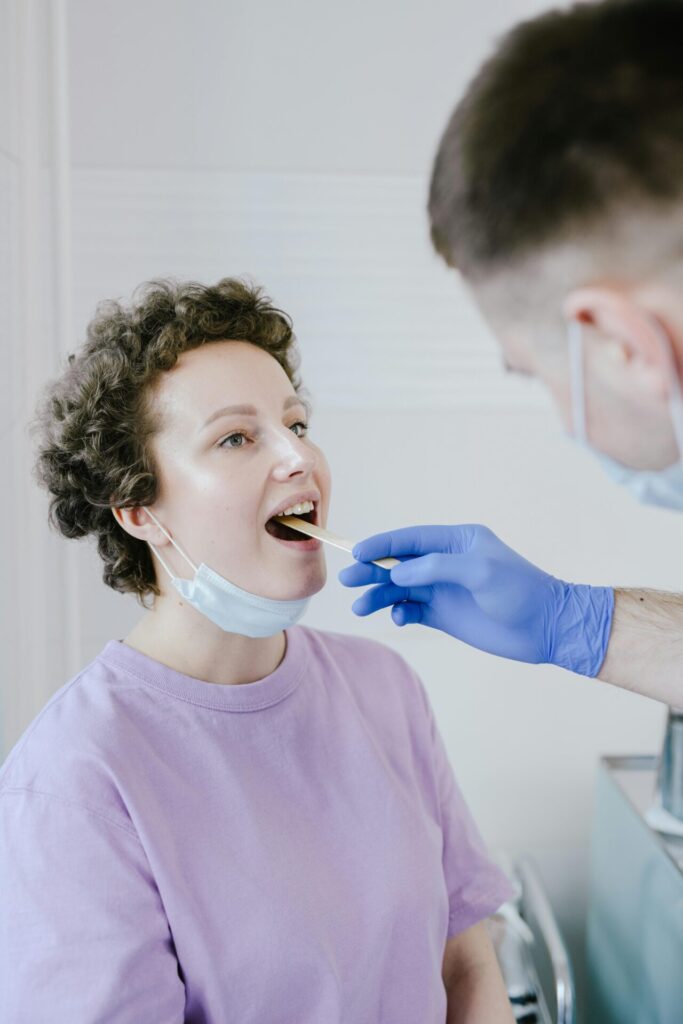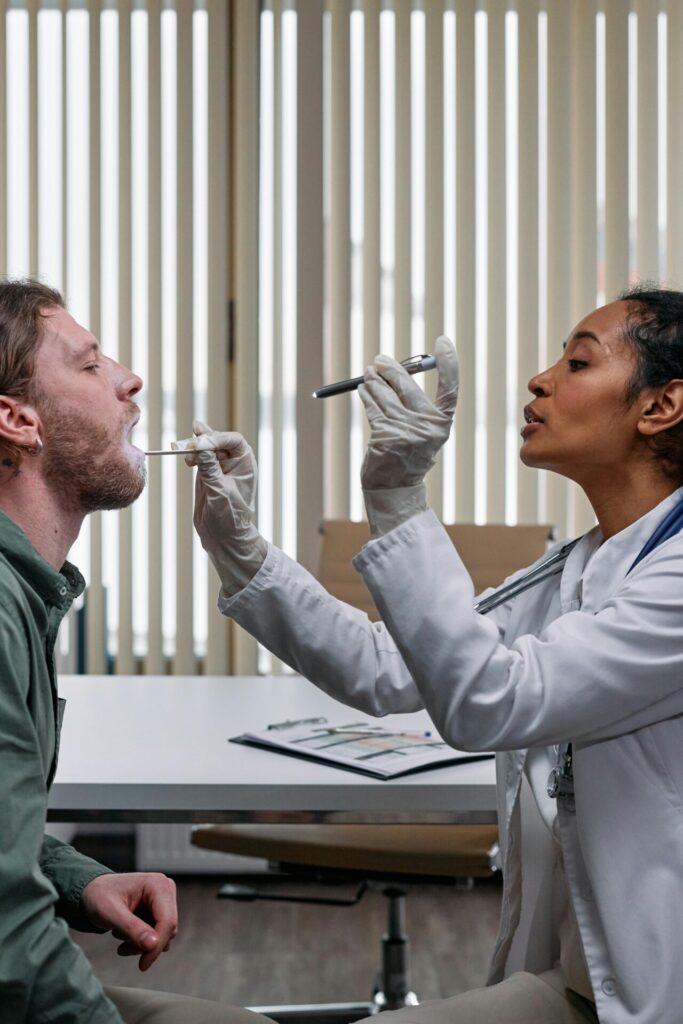Is Strep Throat Contagious? How It Spreads and When You’re No Longer Infectious
Contents
- 1 Is Strep Throat Contagious? How It Spreads and When You’re No Longer Infectious
- 1.0.0.0.0.1 Read DISCLAIMER
- 1.0.0.0.0.2 The material presented here is for general informational and educational purposes only and is not medical advice. Although we attempt to provide current and accurate information, this blog should not be used as a replacement for professional medical consultation, diagnosis, or treatment. In all cases, consult your physician or an accredited medical practitioner with regards to any medical condition or treatment. Do not ignore professional medical advice or wait for it on the basis of information provided by this blog. In a medical emergency, call emergency services immediately.
- 1.1 FAQs with Answers:
Is strep throat contagious? Learn how Group A Streptococcus spreads, when it’s infectious, and how to prevent transmission while recovering safely.
Read DISCLAIMER
The material presented here is for general informational and educational purposes only and is not medical advice. Although we attempt to provide current and accurate information, this blog should not be used as a replacement for professional medical consultation, diagnosis, or treatment. In all cases, consult your physician or an accredited medical practitioner with regards to any medical condition or treatment. Do not ignore professional medical advice or wait for it on the basis of information provided by this blog. In a medical emergency, call emergency services immediately.
If you’ve ever experienced the sharp, burning pain of strep throat, you know it’s not something to shrug off. It can make swallowing feel like sandpaper, knock out your energy levels, and leave you wondering how something so common can feel so intense. But the moment someone hears you’ve got strep throat, there’s usually a question that follows right after—“Is it contagious?” And if you’re the one who’s sick, you might wonder how long you need to stay away from others before it’s safe to rejoin the world without spreading it further.
Let’s begin with the simple truth: yes, strep throat is contagious. It spreads easily, especially in homes, schools, and offices where people are in close contact. But understanding how it spreads, how long it stays infectious, and when you’re no longer a risk to others isn’t just about being considerate—it’s a practical part of managing your recovery and helping to prevent outbreaks.

Strep throat is caused by a specific type of bacteria called Streptococcus pyogenes, also known as Group A Streptococcus, or Group A Strep for short. This bacterium is not a virus—it’s a living organism that thrives in the throat and nasal passages of infected people and is spread through respiratory droplets. That means coughing, sneezing, even speaking at close range can expel droplets into the air, potentially reaching the people around you. If those droplets land on a surface like a doorknob, keyboard, or phone, and someone touches it and then touches their nose or mouth, the bacteria can make its way into their system. It’s surprisingly efficient, which is why strep throat can pass so quickly through classrooms or families.
But not everyone exposed to the bacteria will get sick. Some people, especially adults with stronger immune responses or those who’ve been exposed to strep before, may carry the bacteria in their throat without showing any symptoms. These people are known as asymptomatic carriers. While they may not feel ill or show any signs of sore throat or fever, they can still spread the bacteria to others, particularly those who are more vulnerable like children, the elderly, or anyone with a compromised immune system.
When someone does get sick with strep throat, the symptoms usually come on quickly. Unlike a viral sore throat, which might develop gradually alongside sniffles and congestion, strep tends to hit hard. Sudden severe sore throat, pain when swallowing, red and swollen tonsils (often with white patches), fever, headache, body aches, and sometimes even a fine red rash known as scarlet fever—these are hallmark signs of a Group A Strep infection. It’s important to note, however, that strep doesn’t usually cause coughing or a runny nose. So if someone has a sore throat with a cough and nasal congestion, a virus is more likely the culprit.
So how long is someone with strep throat contagious? The answer depends on whether or not they’re receiving treatment. Without antibiotics, a person with strep throat can remain contagious for up to two to three weeks—even if symptoms begin to fade earlier. However, once treatment begins—typically with a prescribed course of antibiotics like penicillin or amoxicillin—the contagious period drops dramatically. Most people are no longer infectious 24 hours after starting antibiotics. That’s why doctors usually recommend staying home from school or work for at least one full day after beginning treatment.
This 24-hour rule is not just about protecting others—it’s also part of effective treatment. Antibiotics work by attacking the bacterial infection at its source, not only speeding up recovery but also reducing complications. Untreated strep can sometimes lead to more serious conditions like rheumatic fever, kidney inflammation (post-streptococcal glomerulonephritis), or even spreading the infection to other parts of the body. While these complications are rare in healthy individuals with access to medical care, they’re important reminders of why timely diagnosis and treatment matter.

Proper hygiene is your best defense against catching or spreading strep throat. That means frequent and thorough handwashing—especially after coughing, sneezing, or touching your face. Cover your mouth and nose with a tissue or your elbow when you cough or sneeze, and avoid sharing utensils, drinks, or toothbrushes. Disinfect commonly touched surfaces, particularly if someone in your home is sick. In group settings like schools, it’s a good idea to keep kids home for at least 24 hours after their first antibiotic dose and until they’re fever-free.
Testing for strep is fairly straightforward. Doctors use a rapid antigen test, often called a “rapid strep test,” which involves swabbing the throat and checking for the presence of Group A Strep. Results usually come back within minutes. If the rapid test is negative but symptoms still strongly suggest strep, the doctor might also send the swab for a throat culture, which takes longer but is more accurate. If strep is confirmed, antibiotics are usually started right away, not only to treat the illness but also to reduce its contagiousness.
It’s worth noting that not all sore throats need antibiotics. In fact, most sore throats are caused by viruses, and antibiotics won’t help with those. That’s why testing before prescribing is so important. Overuse of antibiotics can lead to resistance, where bacteria learn to survive the medications that are meant to kill them. It’s one of the biggest concerns in modern medicine, and it’s why doctors try to reserve antibiotics for cases where they’re truly necessary—like confirmed bacterial strep throat.
If you’ve had strep throat, you know it can leave you feeling pretty wiped out. Even after the fever breaks and the pain starts to subside, your body may feel drained. That’s normal. Rest, hydration, warm liquids like tea or soup, and throat-soothing options like saltwater gargles or lozenges can all help you recover comfortably. Most people start feeling better within 2–3 days of starting antibiotics, though finishing the full course is essential—even if you feel completely fine. Stopping antibiotics early can lead to a resurgence of infection or allow the bacteria to become stronger.

And what if you’ve been exposed to someone with strep? Do you need treatment right away? Not necessarily. If you’re feeling well and have no symptoms, the best course is usually to monitor yourself. But if you live in the same household or are in close daily contact, especially if you’re in a high-risk group, it’s wise to be cautious. If symptoms arise, contact a doctor promptly. The sooner strep is diagnosed and treated, the shorter the contagious period and the lower the risk of complications.
In families or classrooms where strep seems to keep making the rounds, it’s tempting to feel helpless—like it’s a cycle you can’t break. But awareness goes a long way. Knowing the signs, acting quickly when symptoms start, keeping environments clean, and following treatment plans properly can all help stop the spread. And teaching kids about hygiene—handwashing, not sharing food, and covering sneezes—lays down habits that protect them for life.
At the end of the day, strep throat is a common illness, but it’s also one we understand very well. We know how it spreads, we know how to treat it effectively, and we know how to prevent passing it to others. Being informed means you can take action with confidence, not fear. So if someone around you has strep, or if you’re dealing with it yourself, take a breath, follow the basics, and trust the process. You’re not powerless—you’re prepared.
FAQs with Answers:
- Is strep throat contagious?
Yes, strep throat is caused by a contagious bacterium known as Group A Streptococcus and spreads easily through respiratory droplets. - How does strep throat spread?
It spreads via coughing, sneezing, close contact, or touching contaminated surfaces and then touching your mouth or nose. - How long is strep throat contagious without antibiotics?
Up to 2–3 weeks if left untreated, even if symptoms improve. - When is someone no longer contagious after antibiotics?
Typically 24 hours after starting antibiotic treatment, assuming there’s no fever. - Can adults get strep throat from kids?
Yes, adults can catch strep from children, especially through close contact or shared items. - Do I need antibiotics for strep throat?
Yes, antibiotics are recommended to treat strep throat, shorten illness duration, and prevent complications. - What happens if strep throat is not treated?
It can lead to serious complications like rheumatic fever, kidney inflammation, or spread to other parts of the body. - What are the first signs of strep throat?
Sudden sore throat, painful swallowing, fever, swollen tonsils, and white patches in the throat. - Can strep throat go away on its own?
It might, but untreated strep increases risk of spreading and complications, so treatment is advised. - Is a sore throat always strep?
No. Most sore throats are caused by viruses, not strep bacteria. Testing is required to confirm. - Can I go to work or school with strep throat?
Only after at least 24 hours of antibiotics and no fever, to avoid spreading infection. - What surfaces should I disinfect if someone has strep?
Clean doorknobs, phones, light switches, and any shared utensils or bathroom fixtures. - Can you carry strep without symptoms?
Yes. Some people are asymptomatic carriers and can still spread the bacteria. - Can strep throat cause a rash?
Yes. A fine red rash called scarlet fever may appear in some cases of strep. - What’s the best way to prevent strep throat?
Wash hands frequently, avoid sharing personal items, and stay away from people who are sick.

Really enjoying this article! Strategic play is key, and a secure platform matters. Been checking out legend link download – the KYC process gives me peace of mind. Good read! 👍
**mind vault**
mind vault is a premium cognitive support formula created for adults 45+. It’s thoughtfully designed to help maintain clear thinking
**sugarmute**
sugarmute is a science-guided nutritional supplement created to help maintain balanced blood sugar while supporting steady energy and mental clarity.
**glpro**
glpro is a natural dietary supplement designed to promote balanced blood sugar levels and curb sugar cravings.
**vittaburn**
vittaburn is a liquid dietary supplement formulated to support healthy weight reduction by increasing metabolic rate, reducing hunger, and promoting fat loss.
**prodentim**
prodentim an advanced probiotic formulation designed to support exceptional oral hygiene while fortifying teeth and gums.
**glucore**
glucore is a nutritional supplement that is given to patients daily to assist in maintaining healthy blood sugar and metabolic rates.
**prostadine**
prostadine is a next-generation prostate support formula designed to help maintain, restore, and enhance optimal male prostate performance.
**sleeplean**
sleeplean is a US-trusted, naturally focused nighttime support formula that helps your body burn fat while you rest.
**synaptigen**
synaptigen is a next-generation brain support supplement that blends natural nootropics, adaptogens
**nitric boost**
nitric boost is a dietary formula crafted to enhance vitality and promote overall well-being.
**wildgut**
wildgutis a precision-crafted nutritional blend designed to nurture your dog’s digestive tract.
**mitolyn**
mitolyn a nature-inspired supplement crafted to elevate metabolic activity and support sustainable weight management.
**zencortex**
zencortex contains only the natural ingredients that are effective in supporting incredible hearing naturally.
**yu sleep**
yusleep is a gentle, nano-enhanced nightly blend designed to help you drift off quickly, stay asleep longer, and wake feeling clear.
**breathe**
breathe is a plant-powered tincture crafted to promote lung performance and enhance your breathing quality.
**pinealxt**
pinealxt is a revolutionary supplement that promotes proper pineal gland function and energy levels to support healthy body function.
**energeia**
energeia is the first and only recipe that targets the root cause of stubborn belly fat and Deadly visceral fat.
**prostabliss**
prostabliss is a carefully developed dietary formula aimed at nurturing prostate vitality and improving urinary comfort.
**boostaro**
boostaro is a specially crafted dietary supplement for men who want to elevate their overall health and vitality.
**potent stream**
potent stream is engineered to promote prostate well-being by counteracting the residue that can build up from hard-water minerals within the urinary tract.
**hepato burn**
hepato burn is a premium nutritional formula designed to enhance liver function, boost metabolism, and support natural fat breakdown.
**hepato burn**
hepato burn is a potent, plant-based formula created to promote optimal liver performance and naturally stimulate fat-burning mechanisms.
**flowforce max**
flowforce max delivers a forward-thinking, plant-focused way to support prostate health—while also helping maintain everyday energy, libido, and overall vitality.
**prodentim**
prodentim is a forward-thinking oral wellness blend crafted to nurture and maintain a balanced mouth microbiome.
**cellufend**
cellufend is a natural supplement developed to support balanced blood sugar levels through a blend of botanical extracts and essential nutrients.
**neurogenica**
neurogenica is a dietary supplement formulated to support nerve health and ease discomfort associated with neuropathy.
**revitag**
revitag is a daily skin-support formula created to promote a healthy complexion and visibly diminish the appearance of skin tags.
buy cannabis chocolate worldwide delivery